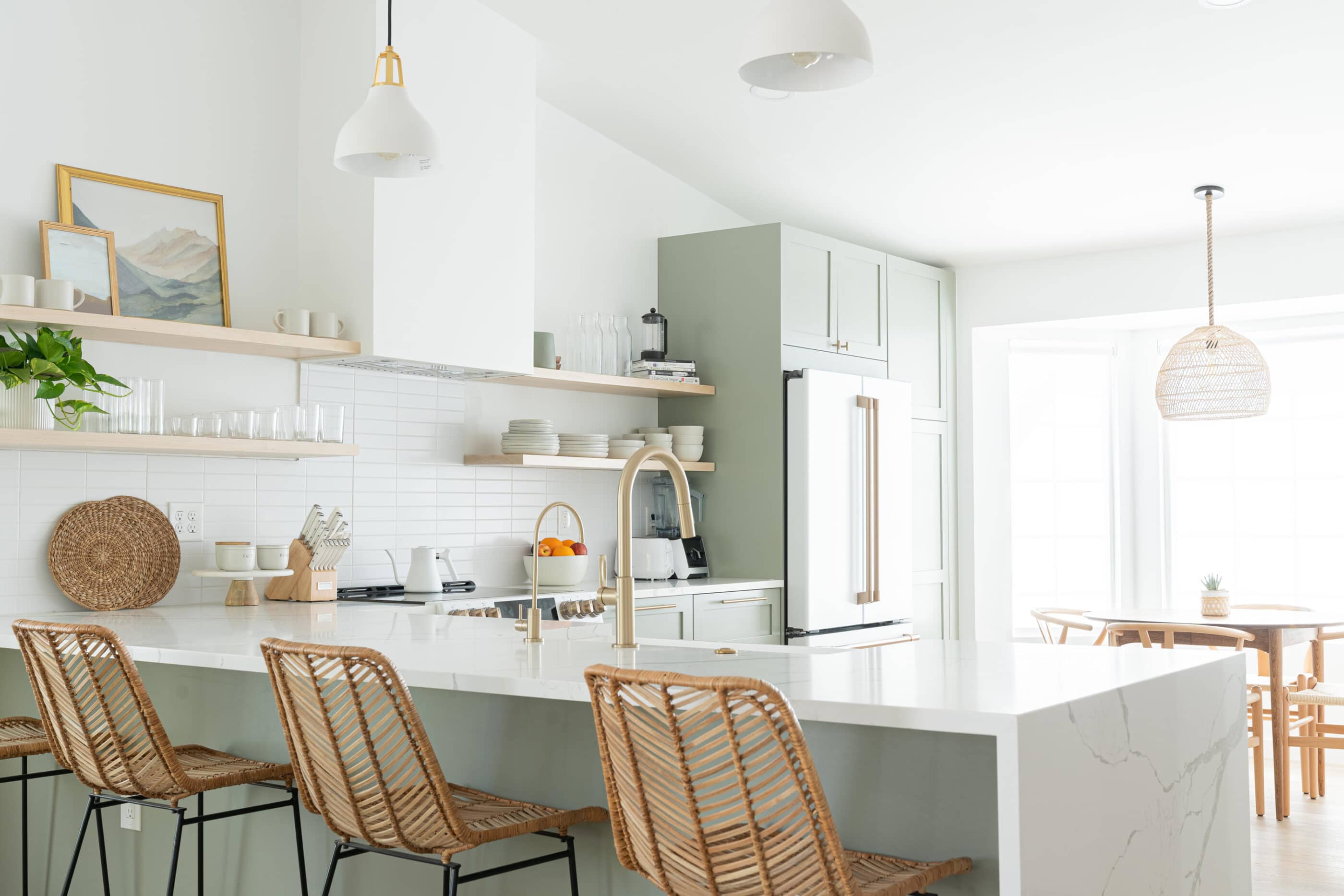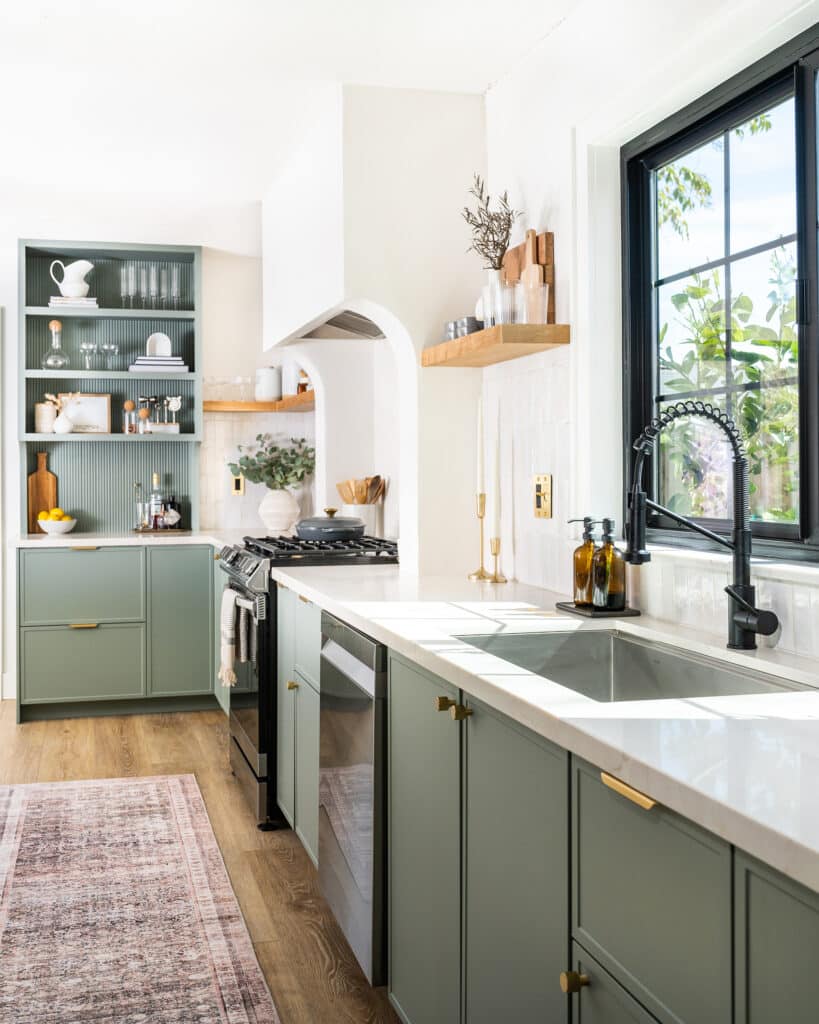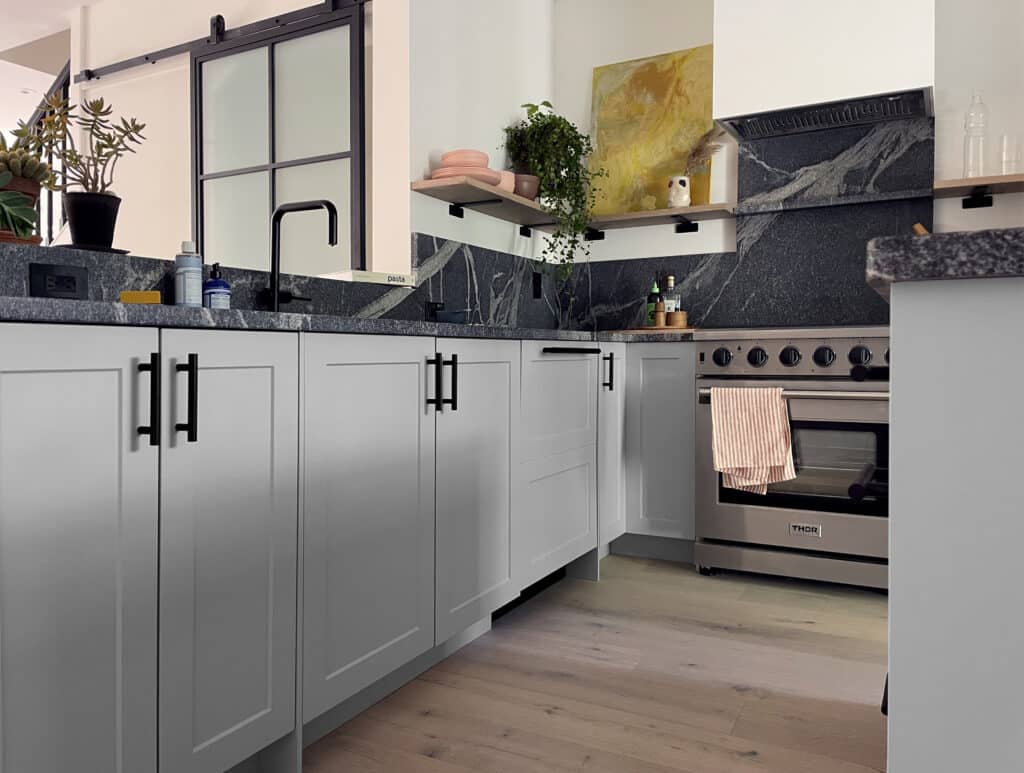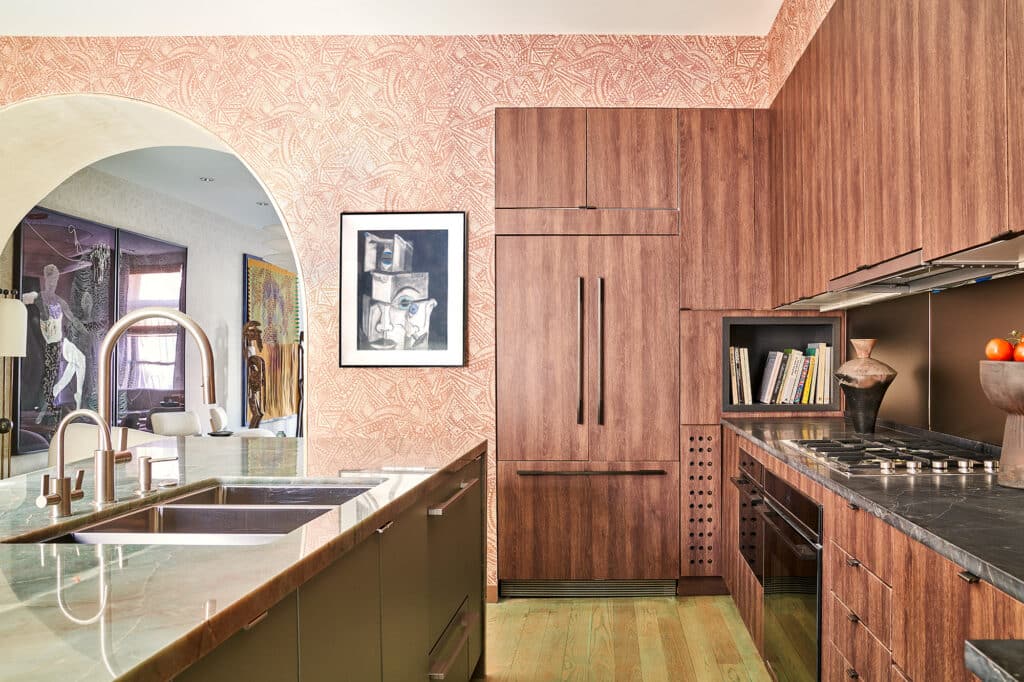If it seems like your Instagram feeds are inundated with Shaker-style kitchens, it’s not just your imagination. The handcrafted aesthetic has a simplicity that gives it a timeless appeal.
The Shakers, an offshoot of the Quakers, lived communally and supported themselves through commerce with outsiders. Members were celibate, which perhaps gave them time to invent everything from wooden clothes pins and the circular saw to a washing machine and a wood joinery machine. They also believed an object’s form should follow its function. In 1821, US Shaker leader John Meacham, codified rules for Shaker architecture and aesthetics citing things should useful and uniform, which gave their handmade chairs, benches, and cabinets a distinctive style.
This functional minimalism is still appreciated today, which is why Shaker design makes its way into a myriad of diverse projects. We spoke to some of our favorite designers about why they turn to Shaker-style cabinetry again and again.
Works With Any Design Aesthetic
“We’ve used Shaker-style cabinets in a Craftsman house, in a Spanish Colonial, and in a modern house, and we can work with that and pick the fixtures and finishes that help hit the general aesthetic of the home,” says Olivia Wahler, who runs Santa Barbara-based design firm Hearth Home Interiors alongside her sister-in-law Katie Labourdette-Martinez. For the Spanish Colonial home, they chose a time-honored design for the kitchen with a mix of Semihandmade wood tone and matte white Shaker fronts, plus simple brass knobs.
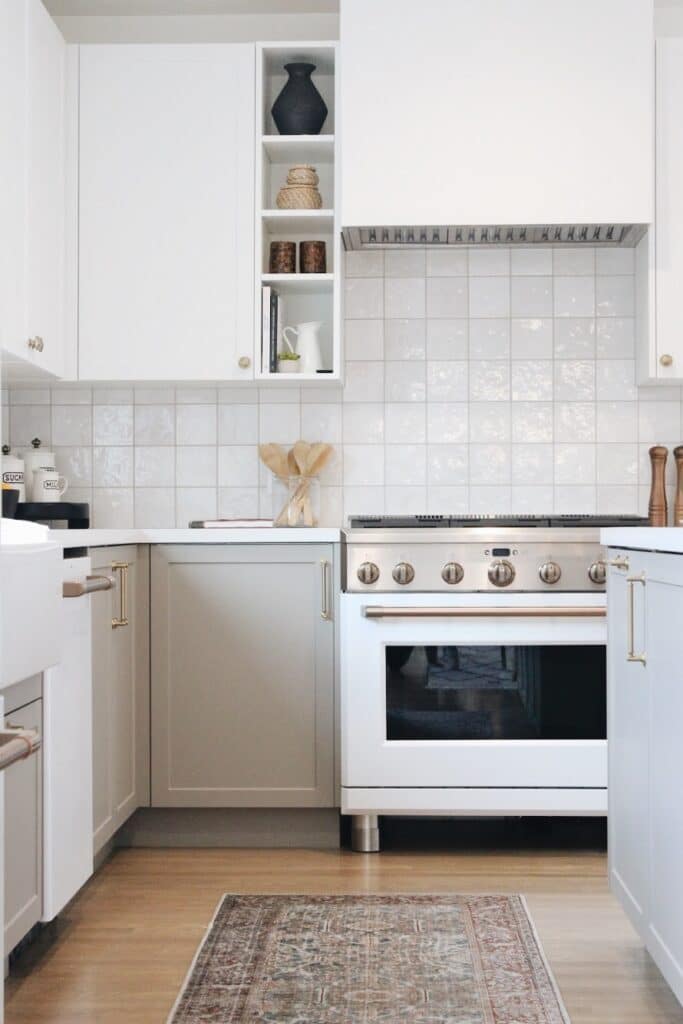
Design by: Hearth Homes Interiors; Photography by: Erin Feinblatt
Shaker Evokes a Handmade Quality
As she was designing her laundry room, Ciara Kenaston had to start from scratch. The room had few cabinets and a lot of wasted space with no particular purpose. While Shaker design saw its heyday from 1820 to 1865, it’s right in line with the Craftsman aesthetic that was most popular from 1905 through the 1920s. “I wanted it to feel like it was part of our Craftsman home with the Shaker style,” says Kenaston, who lives near Portland. “Adding IKEA cabinet boxes and Semihandmade DIY Shaker cabinet fronts really made the space feel intentional and custom.”
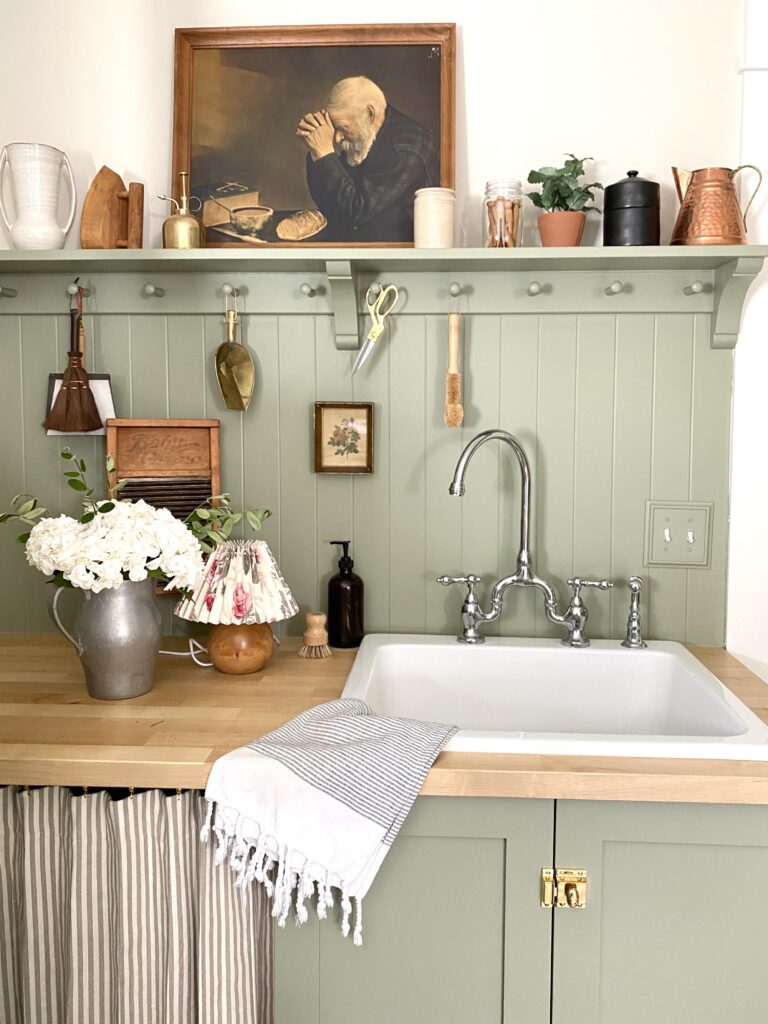
Design and Photography by Ciara Kenaston
Shaker Doesn’t Have to Mean Minimal
While all classic Shaker cabinets feature a recessed rectangular center with a raised edge, the measurement of the insets can vary, says Albie Buabeng of Albie Knows Design. The designer and content creator chose Semihandmade’s Supermatte White Shaker fronts for her kitchen beverage station. The proportions coordinate with the galley kitchen’s other cabinets, BOXI by Semihandmade matte black Peppercorn Edge cabinets. “What made choosing Shaker an easy choice for me was that the way it is essentially pretty clean and simple; There’s no ornate be doing or anything like that,”she says
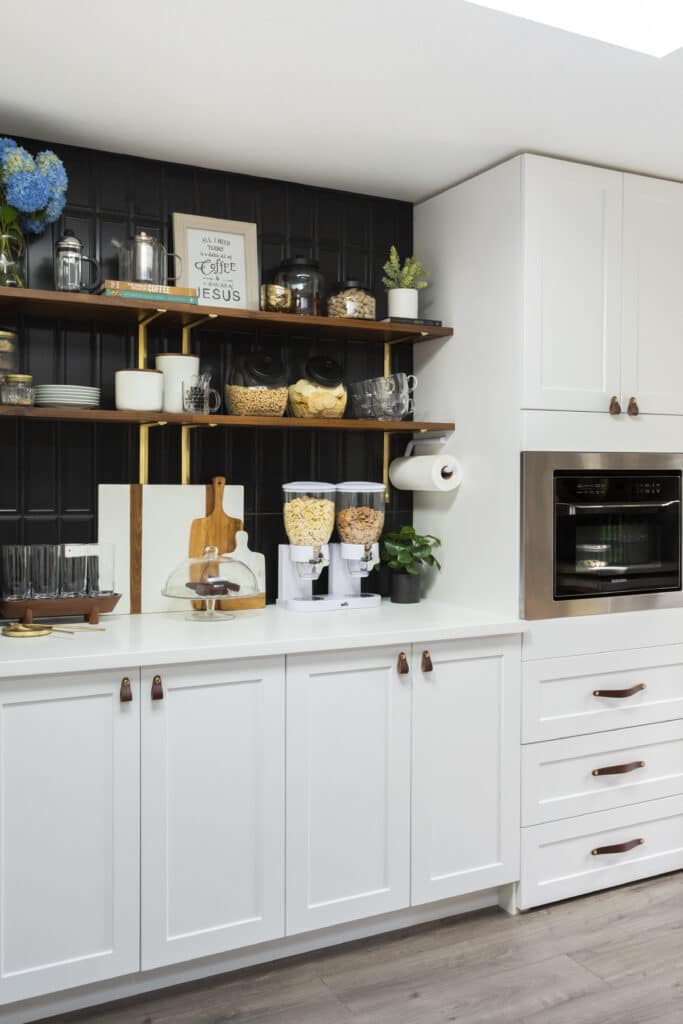
Design by Albie K. Buabeng; Photography be Ellie Lillstrom
They Look Good in Any Hue
Designer Gizel Bahlman’s kitchen in Chandler, Arizona, is on the smaller side, so she wanted to make a statement with her cabinet color. She settled on Farrow & Ball’s Pigeon, a soft blue-gray paint that can appear sage green, and she couldn’t be happier with the way the color made her DIY Shaker cabinets stand out. “Our kitchen isn’t the biggest, and Shaker cabinets brought so much character, especially because of the bold color I picked,” Bahlman says. “That’s another thing I love about Shaker cabinets. I have never seen a paint color you can’t throw on them. They’re just so versatile.”
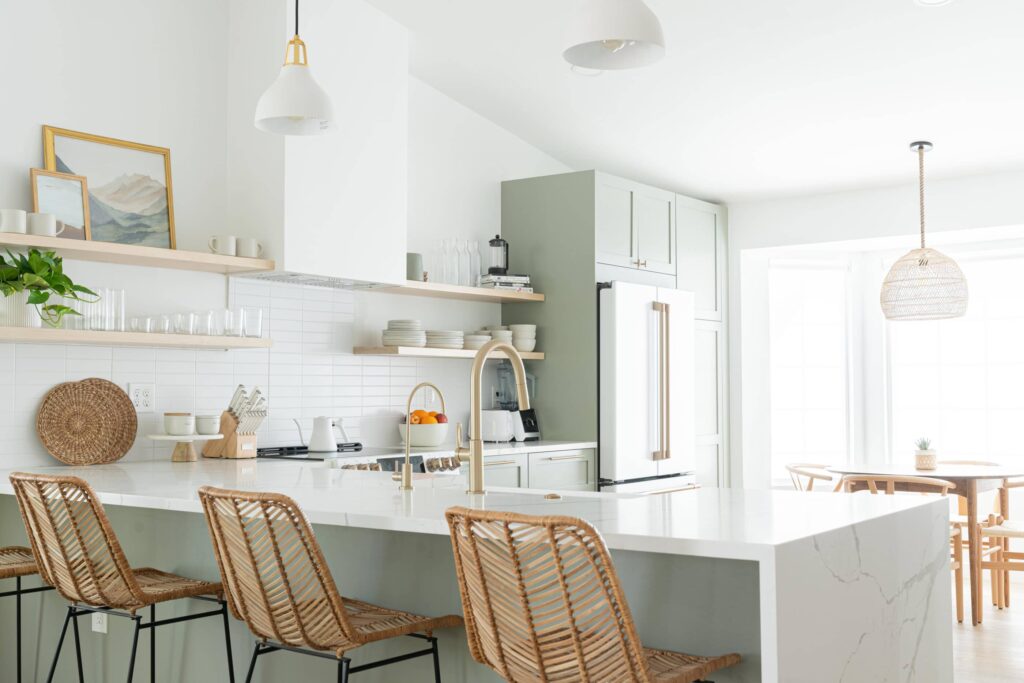
Design and Photography by Gizel Bahlman
Add a Historic Touch to Your Renovation
When architect and designer Anne-Marie Singer took on remodeling a New York brownstone, the clients told her they wanted their home to have a Scandinavian-meets-Southwestern-desert vibe. To bring that mix of simplicity and warmth to the kitchen, Singer layered Zellige tile, brass-and-glass lighting by Cedar & Moss, and other touches that feel simple and practical. “We landed with Shaker because it works in the space, especially in New York City where the majority of the housing is pre-war,” she says. “It’s a good in-between that complements a modern aesthetic and sort of more traditional details you would find on a pre-war brownstone.”
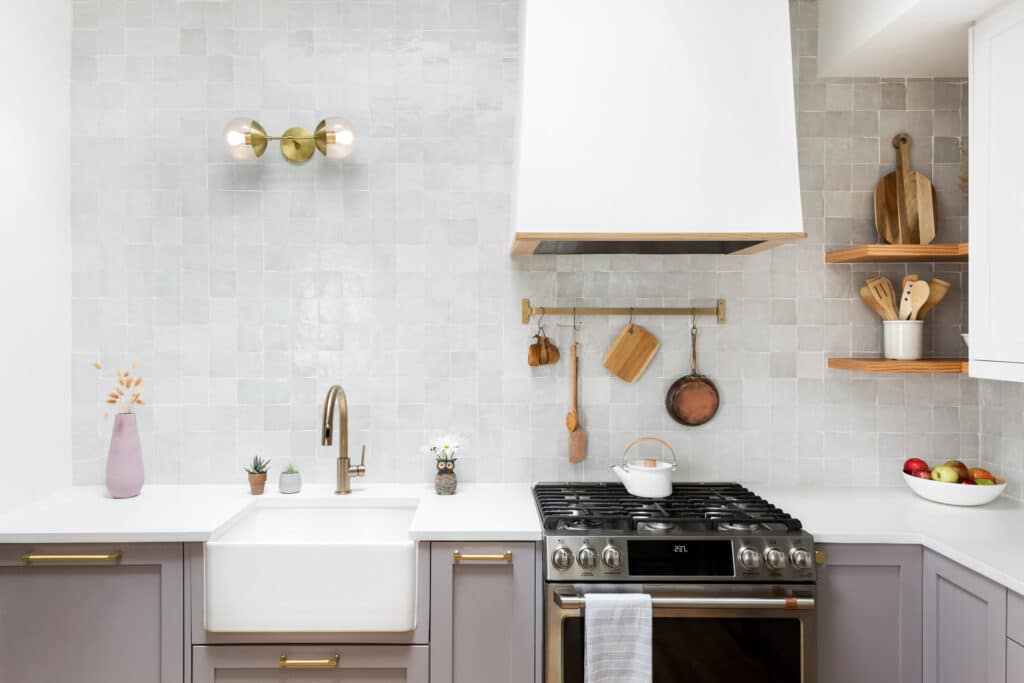
Design by AM Singer Design; Photography by Ball & Albanese
Earthy and Inviting
Some gray paints can feel somewhat cold, but Gina Gutierrez of Gina Rachelle Design shows how they can feel inviting and warm. Her client had a Spanish-style home in California, so they wanted the mudroom to capture that casual and warm aesthetic. “We thought that the Shaker cabinets would ground that space,” says Gutierrez, who just launched Storia Home boutique in Sebastopol, California. “And, then we would bring in other earthy, California-style elements that fit the family’s personality and were well-suited for the house too.” The mudroom is cozy with Supermatte Grey Shaker fronts, a natural wood floating shelf full of plants, simple art, and green tile floor.
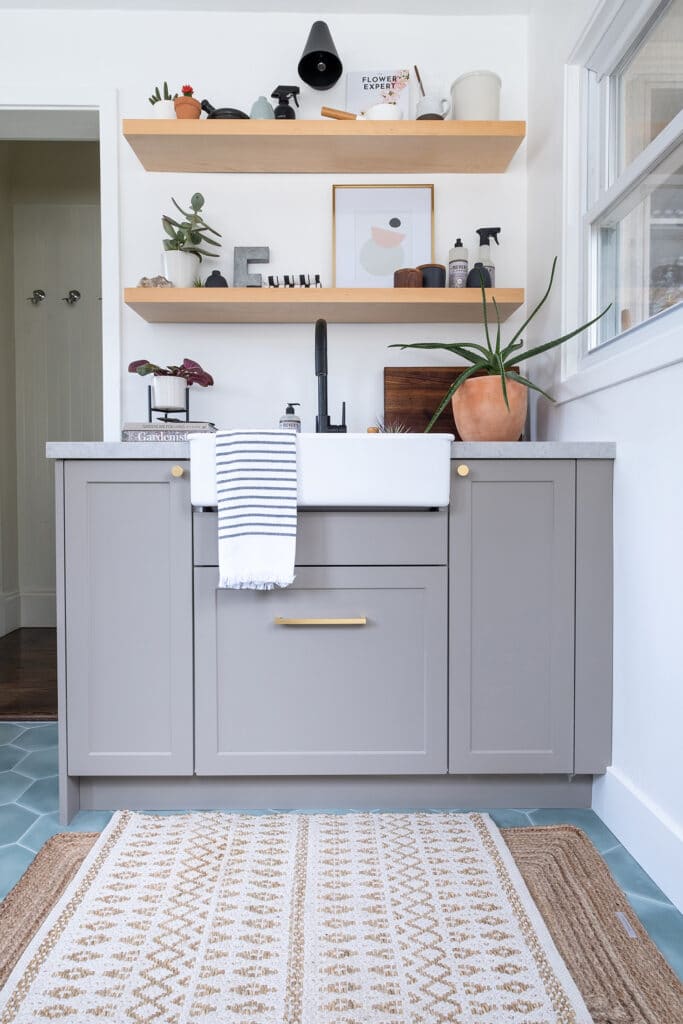
Design by Gina Rachelle Design; Photography by Max Maloney
Shaker is Timeless
For a recent kitchen remodel of a 1980s home, designer Kristin Laing wanted the space to feel like it had more of a story behind it. “We wanted the house to look more collected, as though it had been there longer,” Laing says. “We wanted to do the kitchen with a timeless cabinet that didn’t date the house to any time looking more modern or older.” She achieved that look with Supermatte White Shaker fronts, sleek brass pulls, and elongated marble tile installed vertically. The Agassi Crespo marble tile wall hints at classic Subway in a fresh way. The crisp black and white color scheme adds to the timeless feel, while the horizontal brass line across the vent hood adds a subtle pizzazz.
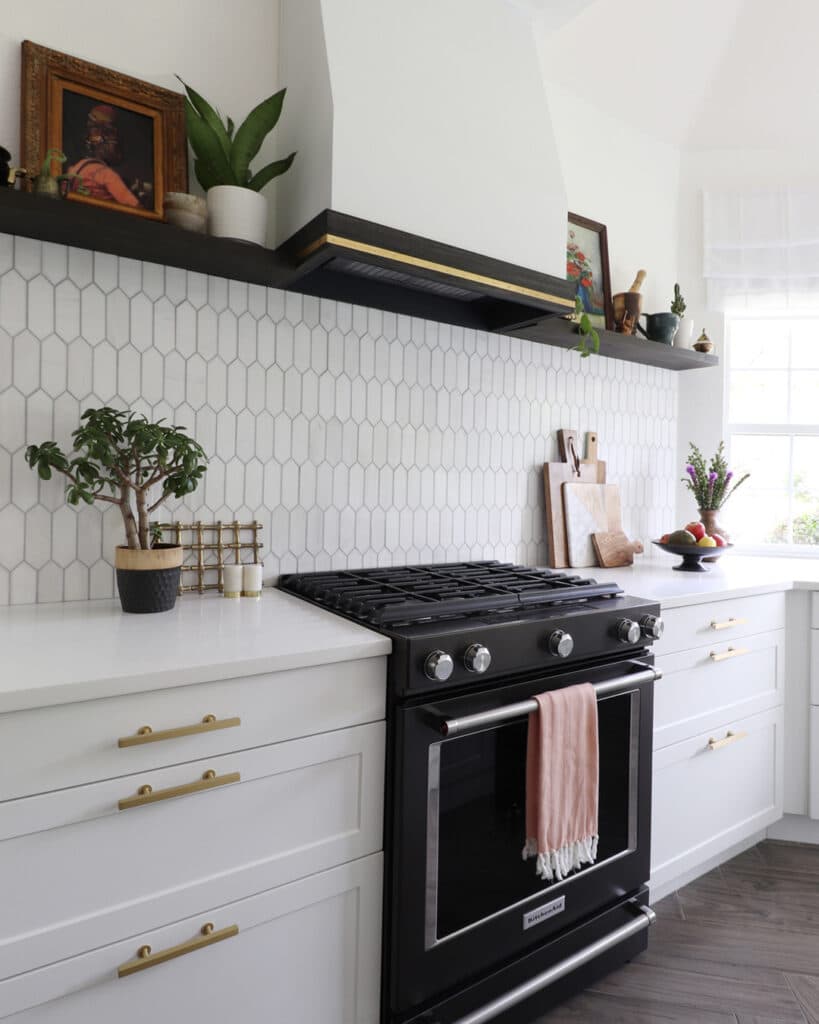
Design and Photography by Kristin Laing





